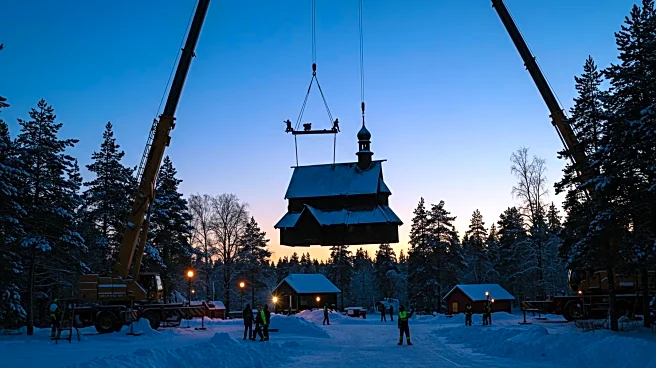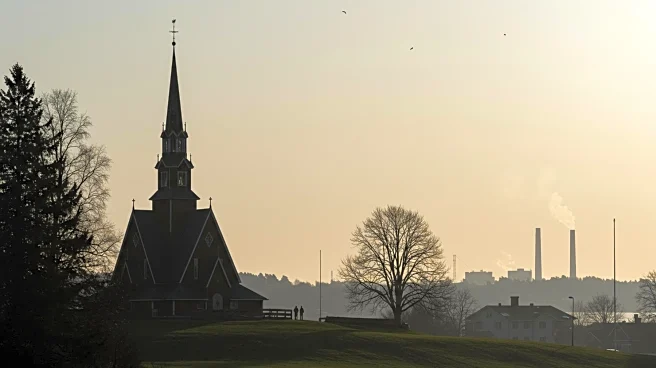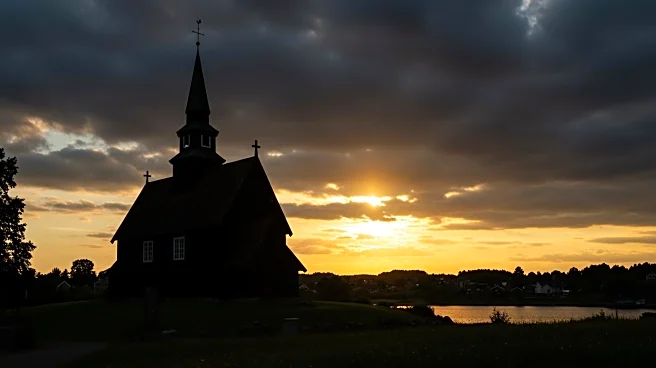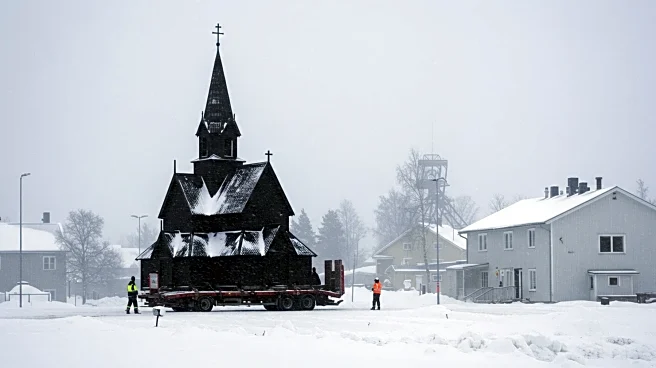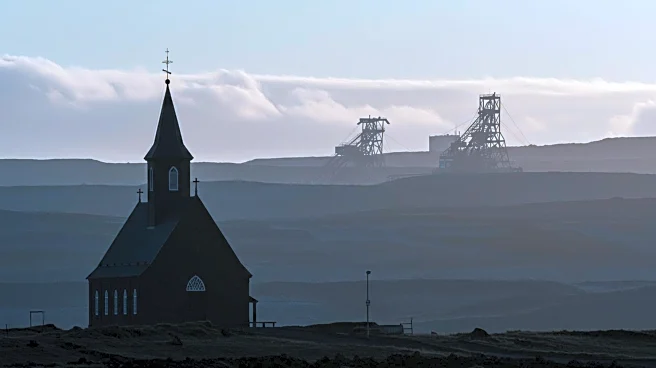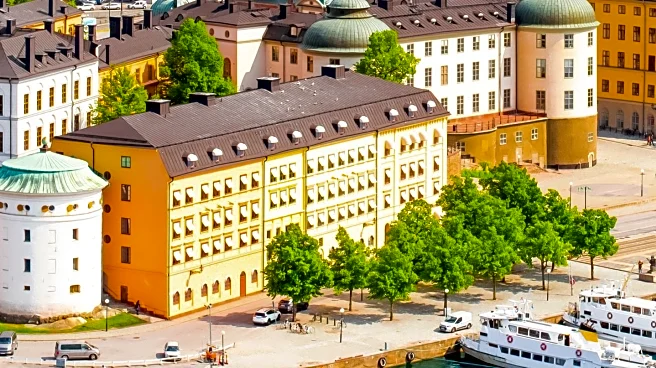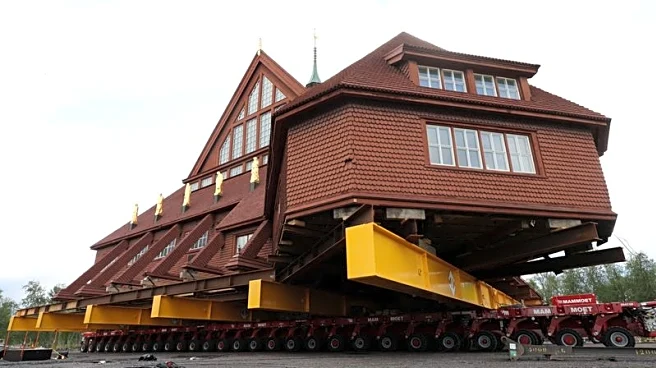Rapid Read • 8 min read
A historic Swedish church, Kiruna Kyrka, has been relocated to protect it from the expansion of Europe's largest underground iron ore mine. The church, consecrated in 1912, was moved 5 kilometers to ensure its preservation as part of a broader urban transformation project led by the state-owned mining company LKAB. The relocation involved lifting the 672-tonne structure onto beams and trailers, including its 2,000-pipe organ and a 1912 altarpiece painted by Prince Eugen. The move, which cost over 500 million kronor, was witnessed by over 10,000 people, including Sweden's King Carl XVI Gustaf. The church is expected to reopen at its new site by the end of 2026.
AD
The relocation of Kiruna Kyrka highlights the tension between cultural preservation and industrial expansion. While the church's move is seen as a necessary step to maintain the town's heritage, it has sparked controversy among the Sàmi community, who argue that their reindeer herding lands and culture are being compromised by the mining activities. The event underscores the broader impact of industrial projects on indigenous communities and the environment, raising questions about the balance between economic development and cultural preservation.
The church's bell tower is scheduled to be relocated next week, continuing the urban transformation project that will last until 2035. The mining company LKAB has committed to compensating affected residents, offering monetary compensation or rebuilding their properties. The controversy surrounding the relocation may lead to further discussions on the impact of mining on indigenous lands and the environment, potentially influencing future policies and practices in Sweden.
The relocation of Kiruna Kyrka serves as a symbol of the immense changes forced by industrial expansion in the Arctic. It raises ethical questions about the prioritization of cultural landmarks over indigenous lands and the long-term environmental consequences of mining activities. The event may prompt a reevaluation of how industrial projects are planned and executed, considering the cultural and environmental implications.
AD
More Stories You Might Enjoy
